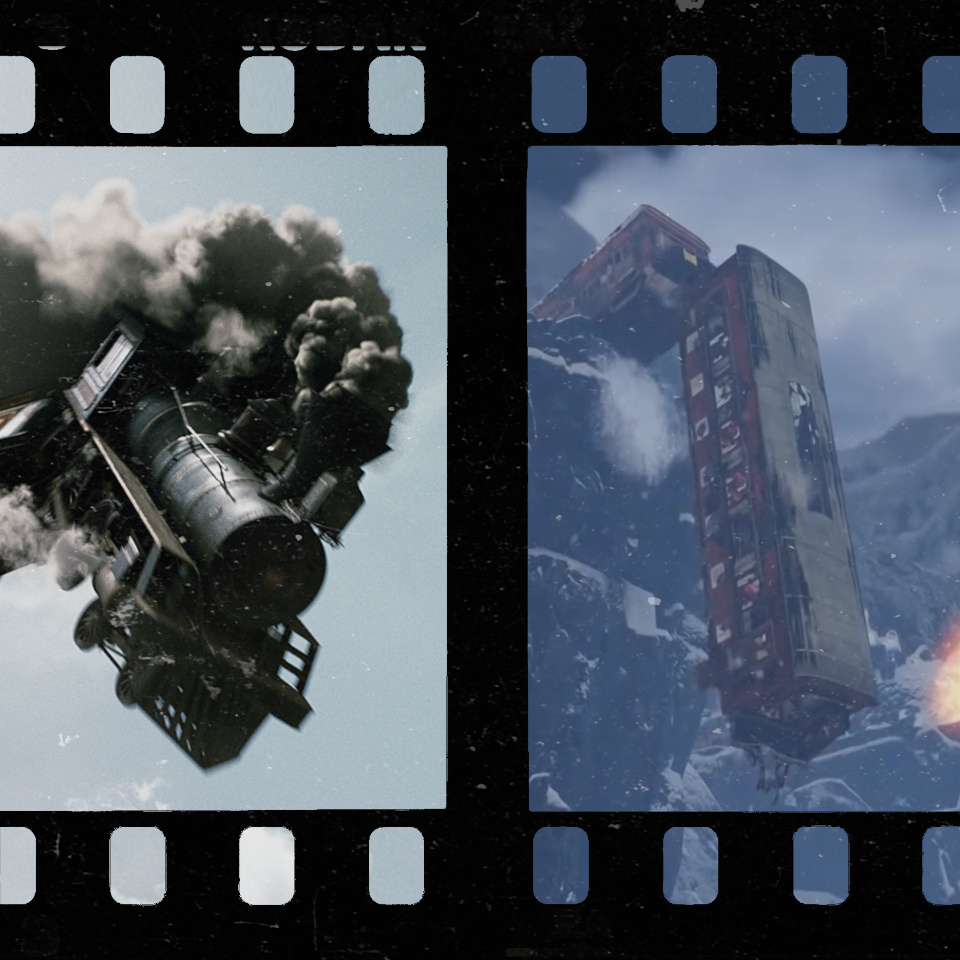Cut Scenes is Josh Wise’s regular column on the intersection between films and video games. This week, it’s Uncharted 2: Among Thieves vs. The Lone Ranger.
The Uncharted series fashions itself from a composite of adventure serial sweetness and action movie pomp, but underneath the veneer is always the bitter trace of the colonial caper – smashing ancient temples, blowing up lost cities, and plundering all that you find. It occupies similar territory with Gore Verbinski’s The Lone Ranger, both film and game rollicking through riven lands with heavy hoofbeats and collateral carnage.
The narrative of Uncharted 2: Among Thieves spins around its thirteenth chapter, Locomotion: the train sequence wherein Drake works his way along a moving train evading enemies and ducking under rail signals as they wail overhead. There are a number of shared little flourishes between the two sequences, and a fascinating layer of metafiction just below the popcorn surface.
First, have a look at the opening of the train sequence in The Lone Ranger; note the number of video game tropes that appear hilariously. The minigun emplacement, which makes an appearance in the corresponding scene in Uncharted 2; the explosive crates, primed with a single bullet; the cover shooting, with people popping in-and-out, exchanging bullets; and the horse’s leap from the rooftops to the train, which one can imagine failing to align and having to re-try several times.
There is a similar moment at the beginning of Locomotion, in Uncharted 2: Elena and Drake sidle their Jeep alongside the train so Drake can make the jump – though Naughty Dog clasps it within the single-take grace of a cut scene. Elsewhere, horses are swapped for helicopters, and the double-act of The Lone Ranger and Tonto is substituted with the lone Drake. But he is the perfect fusion of the film’s two co-leads: the savvy and skill of the Lone Ranger and the hapless comedic grace of Tonto. Drake moves, during the sequence in Locomotion especially, with a sinuous shamble – his shoulders and back absorbing shuddering impacts, his legs jitterbugging this way and that.
Both sequences are capped with a narrow, lucky escape from being crushed by de-coupled train carriages. The Lone Ranger has the two heroes sandwiched between carriages and saved by a strip of metal; Uncharted 2 has Drake saved from a carriage landing on him by the entrance of a railway tunnel. Take a look in the clip below:
The real stroke of genius is the reflexive ribbon running through the two sequences. Director Gore Verbinski had a five-mile stretch of railway built just for the sequence; the film’s budget was around $250 million, and every single dollar bill is there for you to see. The artifice and hubris of such a cinematic feat almost seems like a punchline, one that resembles the railway in the sequence: The First Transcontinental Railroad, built in 1869, was aimed at unifying a country sundered by the Civil War, but it was built by a heavily exploited Chinese workforce.
On its release, in 2013, The Lone Ranger came into a cinematic landscape concerned with representation and political division. The train sequence is a near-perfect symbol for the potential pitfalls of blockbuster Hollywood’s commentary on social issues, the Spike driven home not with subtlety, but with a hammer. Uncharted, for all its cheap thrills and destruction, drips with a knowing undertone: every one-liner during Drake’s murderous campaigns, every mention of artifacts ‘belonging in museums,’ met with Sully’s raised brow. The Naughty Engine 2.0 provided the studio with more than five miles’ worth of track, but in its limitless real estate was more than just bigger, louder set pieces. There was a wry smirk in the midst of the guilty mayhem.






